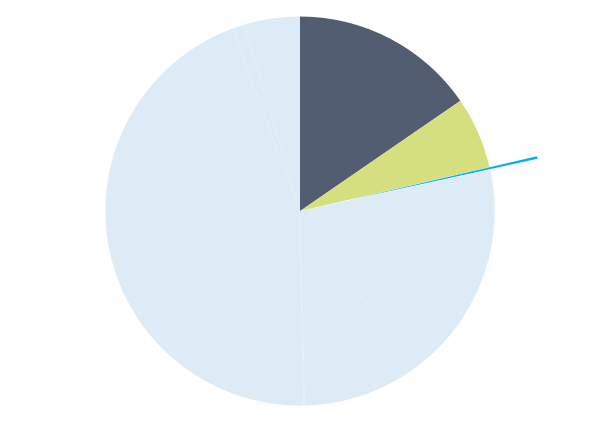Procurement and Construction
Procurement
 Procurement is one of our biggest contributors to our Scope 3 emissions and overall footprint, as is the case for many organisations. Sustainable procurement was therefore identified as an important area of focus in our sustainability strategy.
Procurement is one of our biggest contributors to our Scope 3 emissions and overall footprint, as is the case for many organisations. Sustainable procurement was therefore identified as an important area of focus in our sustainability strategy.
Procurement
2022–23 achievements
This year, the central procurement team hired a sustainability procurement consultancy, Action Sustainability, to help support our plans in refreshing our sustainable procurement policy and improving our practices. A refreshed policy will help change our procurement approach to a more sustainable footing, improve our skills and ways of working.
We have also carried out a more detailed materiality analysis of our emissions from procurement of goods and services to identify the biggest sources of emissions in our supply chain, so that we can focus first on the most material areas. The results of that analysis are set out in the carbon footprint annex.
Our commitments
- Major suppliers assessed on environmental policies by September 2024.
- Where policies are weaker, engage with major suppliers by August 2025 to encourage them to put in place a credible net zero plan and more sustainable products and services.
- All suppliers assessed based on environmental policies by August 2026.
Progress against targets
Major suppliers assessed on environmental policies by September 2024. GREEN
Where policies are weaker, engage with major suppliers by August 2025 to encourage them to put in place a credible net zero plan and more sustainable products and services. GREEN
All suppliers assessed based on environmental policies by August 2026. ORANGE
The incoming sustainable procurement policy will include the drivers for sustainable procurement, triple bottom line sustainability, clear procurement and supply chain specificities, resources for the supply chain, a PLAN-SOURCE-MANAGE guide, and a procurement checklist. Once in place in 2024, we will be able to refresh our assessment of suppliers based on their environmental policies, and place higher demands on suppliers for their net zero targets and environmental practices.
Forward look towards 2024
The central procurement team, with support from Action Sustainability, will:
- Develop a Sustainable Procurement Strategy and Policy, alongside an implementation plan in 2024. To achieve this, the remit includes:
- a review of the current procurement approach and alignment with National Consortia
- best practice benchmarking
- the 2024 roll out and implementation of the new Sustainable Procurement Policy, the Sustainability Strategy, and the alignment of procurement practices to embed sustainability considerations.
- Provide skills, training, and support tools to those who make purchasing decisions both centrally and across Imperial.
- Work with our procurement consortium (SUPC) to identify where the assessment and engagement of suppliers will be done through the consortium on behalf of all members and where it will be done by Imperial directly.
Construction and refurbishment
 Some of the current BMS improvements include tighter controls for energy-hungry plant, weather predictive control of heating circuits and daily reset to defined setpoint to mitigate energy intensive or incorrect operational changes.
Some of the current BMS improvements include tighter controls for energy-hungry plant, weather predictive control of heating circuits and daily reset to defined setpoint to mitigate energy intensive or incorrect operational changes.
Read more about our carbon footprint breakdown in our Annex.
Construction
2022–23 achievements
Fossil fuel free buildings
The Clinical Research Building on Hammersmith Campus is currently under refurbishment and will be Imperial’s first fossil fuel free building heated by air source heat pumps. Infrastructure upgrades include new heating, cooling, and power for the whole building.
The three main interventions are to:
- Disconnect the building from the Trust Steam Network,
“The installation of air source heat pumps was [done] in a way that it would cover the whole building to future proof it.” Paco Villegas Ruiz, Project Manager
- then improve the building fabric,
The thermal imaging shows that the building is well insulated as heat is not being emitted from the inside, but the yellow and red shows heat is escaping the building by the windows. To solve this, all the windows and the existing curtain wall in the south façade are being replaced with triple glazed windows, saving around 22% in energy for the life of the building.
- and finally, improve the overall energy efficiency.
Water source heat pumps have also been introduced, working as a heat recovery system and supply of domestic hot water and heating for Central Biomedical Services. Other measures such as replacing end-of-life energy-hungry equipment like autoclaves and a tunnel wash, will initially save Imperial around £300,000 a year in energy bills with ongoing savings subject to the fluctuation in energy prices.
Our commitments
1. All properties in the investment portfolio to have an Energy Performance Certificate rating of B by December 2030.
2. Reduce carbon consumption of properties by 20%.
3. All new buildings and major refurbishments (over £5 million) to be Building Research Establishment Environmental Assessment Method (BREEAM) rated or other certificates from 2023–24 onwards. GREEN, On target
We are currently on target, with the Property and Major Projects Teams aware of the requirements around BREEAM.
Current on-site projects include the School of Public Health new build (completion expected January 2024), which is on track to meet BREEAM Excellent target, and the Sir Alexander Fleming Building’s Department of Infectious Disease element of the build, which is on track to meet BREEAM Very Good target.
Future projects include the target Very Good BREEAM for the refurbishment of the Catering Kitchen in Level 1 of the Sherfield Building. This project will include the removal of existing gas catering equipment and replacement with electric versions. Where possible, existing building infrastructure will be retained and upgraded where required.


